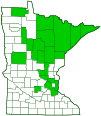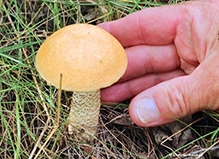Aspen Bolete
(Leccinum insigne)
Conservation • Description • Habitat • Ecology • Distribution • Taxonomy
Conservation Status |
|||
| IUCN Red List | not listed |
||
| NatureServe | not listed |
||
| Minnesota | not listed |
||
Description
Aspen Bolete is a common and widespread mushroom. It is found on the ground, widely scattered or in groups, in woods and woodland edges exclusively under aspen trees. It obtains its nutrients from the rootlets of trees (mycorrhizal). It appears in the summer and early fall, August to October.
The cap is hairless or minutely hairy, dry, and bright orange, reddish-orange, orangish-brown, or cinnamon. It is slightly slippery to the touch when wet. When young, in the button stage, it is round to convex and smooth, and there are usually flaps of sterile tissue attached to the margin. The cap spreads out as it ages. Mature caps are 2⅜″ to 6¾″ wide, broadly convex to nearly flat, duller or paler in color, and sometimes pitted.
The stalk is firm, solid, somewhat tough and fibrous, and dry. It is 2⅜″ to 6″ tall and ⅜″ to 1″ thick, sometimes thicker at the base. It is white or whitish and covered by numerous short, rough, projecting scales (scabers). The scabers are whitish or pale at first, becoming reddish-brown to orange as they age, then black at maturity. The base of the stalk turns blue when cut.
The are no gills. There is a sponge-like layer of tubes on the underside of the cap. The tubes and tube openings (pores) are whitish or pale when young, becoming olive-buff to gray or yellowish-buff with age. They do not turn blue when bruised.
The flesh is thick and often soft. It turns bluish-gray or purplish-gray when bruised or cut, but that may take a long time. Most sources state that all mushrooms in the genus Leccinum are safe to eat. Recently, however, Aspen Bolete has been known (or thought) to cause gastrointestinal distress in some individuals.
The spore print is brown to yellowish-brown.
Similar Species
Orange-capped, scaber-stalked mushrooms in North America have often been identified as Red-Capped Scaber Stalk (Leccinum aurantiacum), both in printed guides and on popular mushroom websites. However, recent DNA analysis suggests that Red-Capped Scaber Stalk is a European species that does not occur in North America. Those orange-capped misidentifications associated with broadleaved trees are most likely Aspen Bolete.
Habitat and Hosts
On the ground exclusively under aspen
Ecology
Season
Summer and early fall
Distribution |
||
|
Sources Biodiversity occurrence data published by: Minnesota Biodiversity Atlas (accessed through the Minnesota Biodiversity Atlas Portal, bellatlas.umn.edu, 8/19/2025). |
|
| 8/19/2025 | ||
Occurrence |
||
Common |
||
Taxonomy
Kingdom
Fungi (Fungi)
Subkingdom
Dikarya
Phylum
Basidiomycota (Basidiomycete Fungi)
Subphylum
Agaricomycotina (Higher Basidiomycetes)
Class
Agaricomycetes (Mushrooms, Bracket Fungi, Puffballs, and Allies)
Subclass
Agaricomycetidae
Order
Boletales (boletes and allies)
Suborder
Boletineae
Family
Subfamily
Leccinoideae
Genus
Leccinum
Subsection
Leccinum
Subordinate Taxa
Synonyms
Boletus aurantiacus
Krombholzia aurantiaca
Krombholziella insignis
Common Names
Orange Bolete
Aspen Bolete
Glossary
Mycorrhizal
A symbiotic, usually beneficial relationship between a fungus and the tiny rootlets of a plant, usually a tree.
Pore
In boletes and polypores; the mouth-like opening at the end of the spore-producing tube.
Visitor Photos
Share your photo of this fungus.
This button not working for you?
Simply email us at info@MinnesotaSeasons.com.
Attach one or more photos and, if you like, a caption.
Dan W. Andree |
||
This one reminds me of Aspen Bolete... Not sure if it is or not. Half a dozen or so popped up in a narrow grassy area between some oaks and small aspen trees. Oct. 3, 2025 I seen them. The one dead or decaying one it looks like there aren’t any gills, but maybe that is due to the rotting or insects had fed on it. Otherwise the first photo with the oak leaves by it the mushroom is very nice looking. |
||
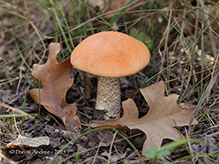 |
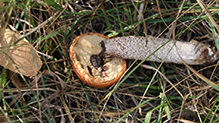 |
|
A smaller … Bolete Mushroom... This image was taken August 17, 2025. I wasn’t sure at first if it was a King Bolete or an Aspen Bolete, but looked closer at the stem and it is different from the Aspen Bolete. This is a frame grab from video I took of it back then. |
||
… seen maybe 3-4 of these smaller ones. They seemed fresher looking and more of a bun shaped rounded top. Nice mushroom. |
||
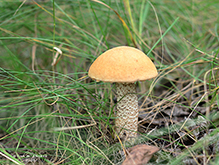 |
||
Luciearl |
||
 |
 |
|
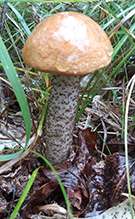 |
 |
|
Not sure if this one's okay, cut and brought home. Animals thought they were tasty! |
||
|
||
Lacy Herron |
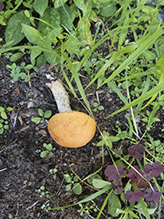 |
Christine Schmidt |
||
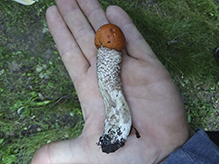 |
 |
|
MinnesotaSeasons.com Photos
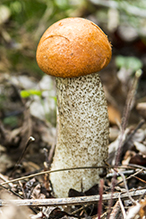 |
 |
|
 |

Slideshows

Visitor Videos
Share your video of this fungus.
This button not working for you?
Simply email us at info@MinnesotaSeasons.com.
Attach a video, a YouTube link, or a cloud storage link.
Other Videos
Minnesota aspen bolete mushroom
jensonmin
Aspen Boletes
jensonmin
Bolete Mushroom (Boletes) Close-up
Carl Barrentine

Visitor Sightings
Report a sighting of this fungus.
This button not working for you?
Simply email us at info@MinnesotaSeasons.com.
Be sure to include a location.
Dan W. Andree
10/3/2025
Location: Norman Co. Mn.
This one reminds me of Aspen Bolete... Not sure if it is or not. Half a dozen or so popped up in a narrow grassy area between some oaks and small aspen trees. Oct. 3, 2025 I seen them.
Dan W. Andree
8/18/2025
Location: MN SNA, Norman Co. Mn.
… seen maybe 3-4 of these smaller ones. They seemed fresher looking and more of a bun shaped rounded top. Nice mushroom.
Dan W. Andree
8/17/2025
Location: Norman Co. Mn.
This image was taken August 17, 2025. I wasn’t sure at first if it was a King Bolete or an Aspen Bolete, but looked closer at the stem and it is different from the Aspen Bolete. This is a frame grab from video I took of it back then.
MinnesotaSeasons.com Sightings |

